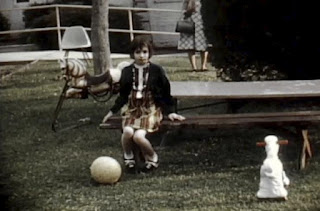A German Superman : Panzer Commander Hermann Balck
A little known German general that, who, with a tired and depleted division, defeated an entire Soviet army, where he was outnumbered 7:1 in tanks, 11:1 in infantry and 20:1 in artillery: Hermann Balck.
He originally fought in World War I, and he fought valiantly for four years. Despite being wounded 7 times, he continued fighting and received an Iron Cross. He was also nominated for the highest military honor — Pour le Mérite — but the war ended before he could receive his award.
At one point, he was selected for the German General Staff, a common path to power in the German military, but he turned it down, preferring to stay on the front lines.
As WW2 started, Balck started as a staffing officer, but in 1940, he was put in charge of a Panzer division, serving in Belgium and Greece. He was transferred to the Soviet front, and this is where his greatness really showed through. Let’s take a look at the situation at the time:
At the time, the German army in Stalingrad had pretty much been fully encircled by the Soviet forces, and the Germans were unable to reach them. The yellow is the German advancement, and as you can see, the forces in Stalingrad were trapped by Soviets. Balck was put in the midst of the fighting for the retake of Stalingrad, with the Soviets possessing a huge numerical and supply advantage over the Germans when he came in.
He was put in charge of a weary, understrength 11th Panzer Division to reinforce Romanian forces at the battlefront. He found a 37 mile front defended with ONE howitzer. The very day he arrived (Dec 6, 1942), the Soviet Fifth Army launched a huge assault, penetrating deep within lines.
He at first needed to regroup and attack. He thought the Soviets were trying to engulf his unit, so he organized anti-tank and anti-air weapons on his flanks, while maneuvering his units into a “hammer.” As the Soviets prepared their next attack on his unit, he struck them down, decimating 53 tanks, and wiping out the Soviet 1 Tank Corps.
He began a brilliant, high-pressing strategy to fight back.
Each time the Soviets attacked, he reformed, then he used his Panzer tanks and artillery to counter-attack and push back. He did this (with battles mostly at night or near the morning) for 8 days straight, making good use of night cover and shock action. In his memoirs:
Each day was like the next. Russian penetration at Point X, counterattack, everything cleared up by evening. Then, another report 20 kilometers eastwards of a deep penetration into some hasty defensive position. About face. Tanks, infantry, and artillery march through the winter night with burning headlights. In position by dawn at the Russians’ most sensitive point. Take them by surprise. Crush them. Then repeat the process the next day some 10 or 20 kilometers farther west or east.
He had managed to fight back the Soviets for the time being, and prepared to launch an attack to save the German army trapped in Stalingrad. Yet, just as he was about to cross the Don River, the Soviets struck further south, forcing him to call off the Stalingrad mission.
He began another series of well-organized, destructive attacks. With just 25 tanks, Balck first ordered them to move into the rear of a line of Soviet tanks, blending in perfectly and then mowing down all the tanks in front of them. Next, as the Soviets began moving in with more tanks in a hill position, Balck ordered his tanks to move into lower ground to aim at a weak part of the tank: the belly. After 6 days of tactically astute defending, the entire Soviet Fifth Tank Army had been wiped out.
Balck was then ordered, with his division, to defend a city Hitler ordered “kept at all costs.” (Mid-December, 1942)
He was coming up on a city that was thinly defended, with Soviet tanks and infantry surrounding it. He wrote:
The situation was desperate. [The German defenders’] only hope lay with a single tired and depleted division that was coming up in driblets (his). In my opinion the situation was so dismal that it could only be mastered through audacity—in other words, by attacking. Any attempts at defense would mean our destruction. We needed to crush the westernmost enemy column first in order to gain some swing space. We would just have to hope—against reason—that the hodge-podge of troops covering Morosovskaya (the city) would hold for a day.
He ordered his tanks to stick to the rear of the Soviet tank columns, which led the Soviet commander to (logically) consolidate his forces around a hill. The trap had been set.
With just 8 tanks to their name, Balck and his forces encircled the hill the Soviets were at, trying their hardest to keep the Soviets trapped. After Christmas day passed, on December 28, the Soviets decided to try fighting their way out of the bubble of German forces around them. Although 12 tanks escaped initially, as soon as Balck learned of the attempt, he ordered his forces to crush the numerically-superior Soviets inside the bubble, then chase down the remaining forces. From then on, his 11th Panzer Division was code-named “Hannibal.”
He went on to fight more battles. During the period from December 7, 1942, through January 31, 1943, the 11th Panzer Division was credited with destroying 225 tanks, 347 antitank guns, 35 artillery pieces, and killing 30,700 Soviet soldiers. Balck’s losses for the same period were 16 tanks, 12 antitank guns, 215 soldiers killed in action, 1,019 wounded, and 155 missing.
He started the war as a staff officer, and ended at the German equivalent of a 3-star general. He was also one of only 27 soldiers to earn the Knight's Cross with Oak Leaves, Swords and Diamonds, equivalent to 3 major honors in the US military.




Comments
Post a Comment